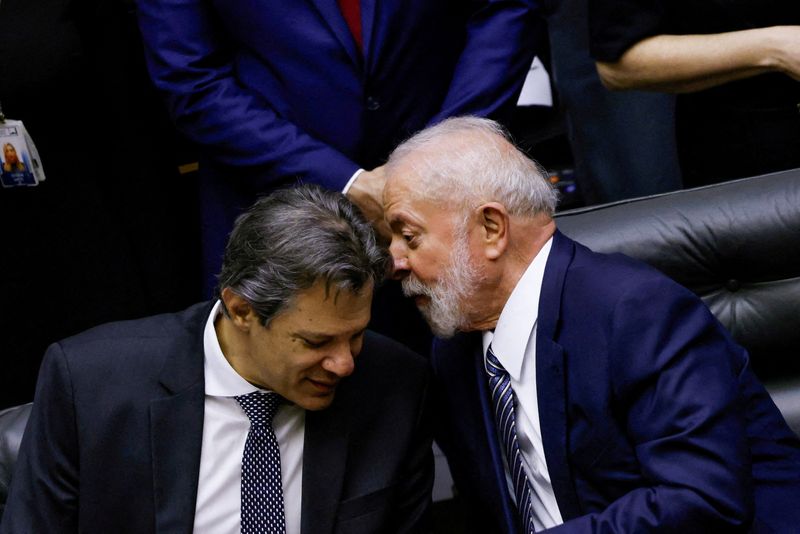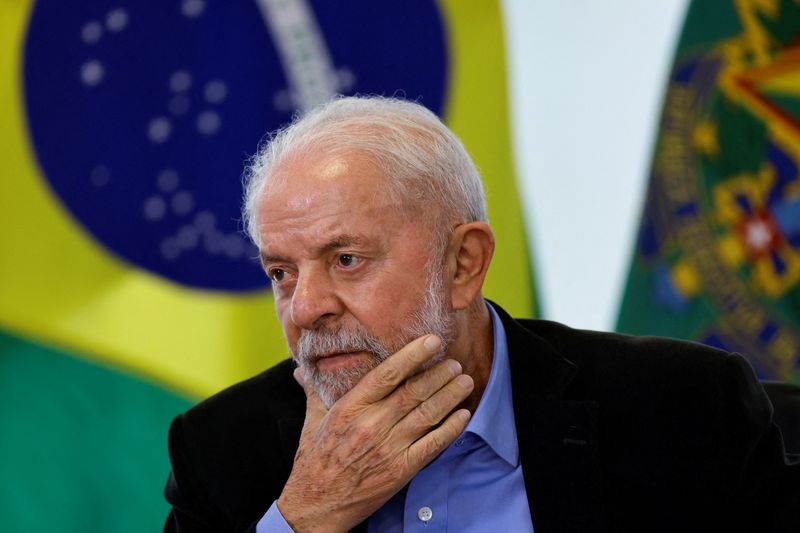By Marcela Ayres
BRASILIA (Reuters) - Brazil's government is expected to loosen its fiscal target for 2025 though it will still target a surplus, two sources familiar with the matter told Reuters on Monday.
Leftist President Luiz Inacio Lula da Silva's government currently targets a primary surplus of 0.5% of gross domestic product (GDP). It must set next year's fiscal target by April 15 as part of the budget guidelines bill it sends to Congress.
The government, however, has struggled to stabilize the country's growing public debt despite its efforts to increase revenue.
A "significant revenue difference" exists between the current projections for public accounts next year and what is necessary to deliver the primary surplus of 0.5% of GDP, according to the first source, who spoke on condition of anonymity.
The second source said the adjustment would be "in the realm of balance towards the positive territory," removing uncertainty associated with potential aggressive tax increase measures in pursuit of the previous target that could impact the economy.
Local newspaper Folha de S. Paulo reported earlier on Monday that the government was mulling lowering the primary surplus target to between 0% and 0.25% of GDP.
Finance Minister Fernando Haddad and other cabinet members will discuss the matter on Tuesday and Wednesday, with an announcement likely next week, Haddad's deputy, Dario Durigan, said at an event in Sao Paulo on Monday.
Speaking to reporters, Haddad said there is still uncertainty about the 2025 fiscal target, referring to the impacts of Congress bills on public accounts.
When it introduced a new fiscal framework limiting spending growth to 70% of the increase in revenues but allowing for a minimum expansion of 0.6% and a maximum of 2.5% above inflation every year, Lula's government stipulated that alongside these rules, it should continue pursuing primary budget targets.
The government set the target to eliminate the primary deficit this year and signaled a primary surplus of 0.5% of GDP in 2025 and 1% of GDP in 2026, with a tolerance margin of one-quarter of a percentage point on either side.

Now, it must formalize the 2025 target in a budget guidelines bill and make a new forecast for the next two years.
Private economists surveyed weekly by the central bank are forecasting a primary deficit of 0.7% of GDP this year, followed by a 0.6% deficit in 2025.
